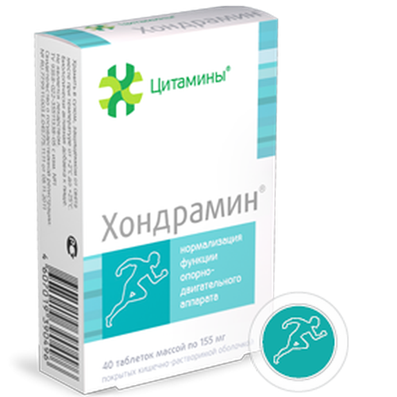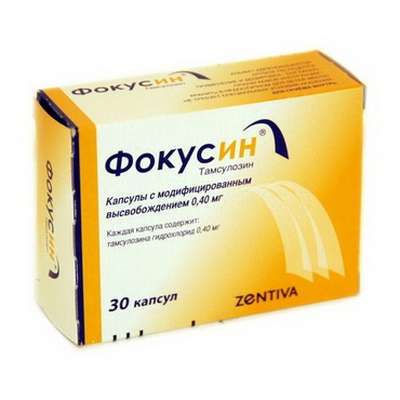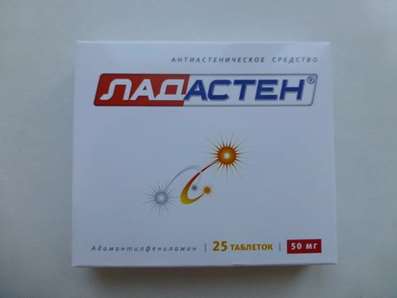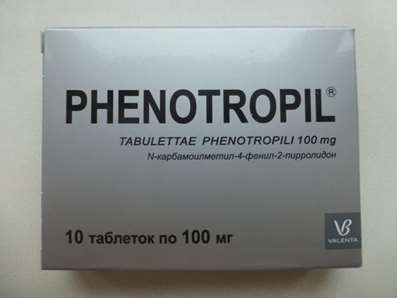Instruction for use: Egitromb
I want this, give me price
Dosage form: film-coated tablets
Active substance: Clopidogrelum
ATX
B01AC04 Clopidogrel
Pharmacological groups
Antiaggregants
The nosological classification (ICD-10)
I20.0 Unstable angina: heberden disease; Angina pectoris; The attack of angina pectoris; recurrent angina; Spontaneous angina; Stable angina pectoris; Angina rest; Angina progressing; Angina mixed; Angina spontaneous; stable angina; Chronic stable angina; Angina Syndrome X
I21 Acute myocardial infarction: Myocardial infarction in the acute phase; Acute Myocardial Infarction; Myocardial infarction with pathologic Q wave and without; Myocardial infarction complicated by cardiogenic shock; Infarction left ventricular; Transmural myocardial infarction; Myocardial infarction netransmuralny (subendocardial); Netransmuralny myocardial infarction; Subendocardial myocardial infarction; The acute phase of myocardial infarction; Acute myocardial infarction;Sub-acute phase of myocardial infarction; Subacute phase of myocardial infarction; Thrombosis of the coronary arteries (the arteries); Threatened myocardial infarction; Myocardial infarction without Q wave
I24.9 Acute ischemic heart disease, unspecified: Coronary heart disease; Coronary insufficiency; Acute coronary insufficiency; Acute coronary syndrome
I48 Atrial fibrillation and flutter: Permanent atrial tachyarrhythmias; Relief frequent ventricular rate during atrial flutter or blink; atrial fibrillation; Paroxysm of atrial fibrillation and flutter; Paroxysm of atrial fibrillation; Paroxysmal atrial fibrillation; Atrial premature beats; Tahiaritmicheskoy atrial fibrillation; Tahisistolicheskoy atrial fibrillation; auricular flutter; Life-threatening ventricular fibrillation; Atrial fibrillation; Chronic atrial fibrillation; supraventricular arrhythmia; Paroxysmal atrial fibrillation and flutter; Paroxysmal fibrilloflutter; Atrial premature beats
I63 Cerebral infarction: ischemic Stroke; Ischemic brain disease; Ischemic stroke; Ischemic stroke and its consequences; Ischemic cerebral stroke; Ischemic cerebrovascular accident; Ischemic brain damage; Ischemic brain damage; ischemic conditions; Cerebral ischemia; Acute hypoxia brain; Acute cerebral ischemia; Acute ischemic cerebrovascular accident; Acute cerebral infarction; Acute ischemic stroke; Acute period of ischemic stroke; Focal cerebral ischemia; Ischemic stroke; recurrent stroke; The syndrome of Morgagni-Adams-Stokes; Chronic cerebral ischemia; cerebrovascular stroke; embolic stroke; Ischemic brain damage
I70 Atherosclerosis: Atherosclerosis; Atherosclerosis of peripheral vessels; Atherosclerotic changes; Atherosclerotic vascular changes; Atherosclerotic disorders; spontaneous; Trombangioz obliterans; Frinlendera disease
I73.9 Peripheral vascular disease, unspecified: angiospasm; Vasospasm / vasoconstriction; vasospastic disorders; Violation of venous microcirculation; Violation of circulation; Violation of peripheral blood circulation; Lack of peripheral blood circulation in the lower and upper limbs; Peripheral arterial occlusive disease; Peripheral arterial occlusive disease in stages III-IV on Fontaine; Peripheral vascular insufficiency; Peripheral vascular lesions; Peripheral vascular disorders; Peripheral circulatory disorder; spasm of artery; angiospasm; Functional peripheral arterial disease; Chronic occlusive disease; Chronic obliterating diseases of the lower limbs; Chronic arterial occlusive disease
I74 Embolism and arterial thrombosis: Thrombosis of effort (stress); Arterial thrombosis; Arteriothrombosis; Subacute and chronic arterial thrombosis; Subacute thrombosis of peripheral arteries; Postoperative thrombosis; Vascular thrombosis; Vascular embolism; Thrombosis of aortocoronary shunt; Arterial thrombosis; Thrombosis of arteries; Coronary artery thrombosis; Coronary thrombosis; Thrombosis of blood vessels; Thrombosis with ischemic stroke; Thrombosis with general surgical operations; Thrombosis in Oncology Operations; Vascular thrombosis; Thrombus formation in the postoperative period; Thrombotic complications; Thromboembolic diseases; Thromboembolic syndrome; Thromboembolic complication in the postoperative period; Thromboembolism of arteries; Partial vascular thrombosis; Embolism; Embolism of arteries
Composition
active substance: Clopidogrel hydrogen sulfate 97.86 mg
(Equivalent to 75 mg of clopidogrel)
Auxiliary substances: cellulose silicon microcrystalline (MCC - 194,236 mg, silicon dioxide colloidal anhydrous - 3,964 mg) - 198.2 mg; Giprolose (with a low degree of substitution (L-HPC B1) - 12 mg, hydrogenated castor oil - 12 mg
Film membrane: Opadry white Y-I-7000 (hypromellose - 6.25 mg, titanium dioxide - 3.125 mg, macrogol 400 - 0.625 mg)
Description of dosage form
White or almost white round biconvex tablets covered with a film shell, with engraving "E 181" - on one side, without or almost no smell.
Pharmachologic effect
Mode of action - antiaggregational.
Pharmacodynamics
Antiaggregant agent. Specific and active inhibitor of platelet aggregation. Selectively reduces the binding of ADP to platelet receptors and the activation of GPIIb / IIIa receptors under the action of ADP, thereby weakening platelet aggregation.
Reduces platelet aggregation, caused by other agonists, preventing their activation by released ADP, does not affect the activity of PDE. Irreversibly binds to ADP-receptors of platelets, which remain immune to stimulation of ADP during the life cycle (about 7 days).
The inhibition of platelet aggregation is observed after 2 hours after administration (40% inhibition) of the initial dose. The maximum effect (60% suppression of aggregation) develops after 4-7 days of constant admission in a dose of 50-100 mg / day. Antiaggregant effect persists throughout the life span of platelets (7-10 days).
In the presence of atherosclerotic lesion of the vessel prevents the development of atherothrombosis, regardless of the localization of the vascular process (cerebrovascular, cardiovascular or peripheral lesions).
Pharmacokinetics
Clopidogrel is rapidly absorbed after repeated administration of 75 mg per day. Bioavailability is high. However, the concentration of the starting material in the plasma is low and after 2 hours does not reach the measurement limit (0.025 μg / l). The connection with plasma proteins is 94-98%. Metabolised in the liver. The main metabolite is an inactive derivative of carboxylic acid, Tmax of which after repeated oral doses of 75 mg is equal to 1 hour (Cmax is about 3 mg / l).
It is excreted by the kidneys - 50% and through the intestine with a fecal mass - 46% (within 120 hours after administration).
T1 / 2 of the main metabolite after a single and repeated administration - 8 h.
The concentration of kidney metabolites is 50%.
The concentration of the main metabolite in plasma after taking 75 mg / day is lower in patients with severe kidney disease (Cl creatinine - 5-15 ml / min) compared with patients with moderate kidney disease (Cl creatinine - 30-60 ml / min) and Healthy faces.
Indications of the drug EGITROMB
Prevention of atherothrombotic complications in adult patients with myocardial infarction (with a duration of several to 35 days), ischemic stroke (with a duration of 7 days to 6 months) or with diagnosed occlusive disease of peripheral arteries;
Prevention of atherothrombotic complications in adult patients with acute coronary syndrome in combination with acetylsalicylic acid (ASA): with ST segment elevation with the possibility of thrombolytic therapy; Without ST segment elevation (unstable angina, myocardial infarction without Q-wave), incl. In patients undergoing stenting with percutaneous coronary intervention;
Prevention of atherothrombotic and thromboembolic complications, including stroke, with atrial fibrillation. In adults with atrial fibrillation who have at least one risk factor for vascular complications who cannot take indirect anticoagulants and have a low risk of bleeding (in combination with ASA).
Contraindications
Hypersensitivity to the active or any auxiliary component of the drug;
Severe hepatic impairment;
Active bleeding (including bleeding from peptic ulcers or intracranial hemorrhage);
Pregnancy and lactation (see "Application in pregnancy and lactation");
Age to 18 years (efficacy and safety not proven).
With caution: moderate hepatic impairment; Chronic renal failure; Pathological conditions that increase the risk of bleeding (including trauma, surgery); Simultaneous administration of ASA, NSAIDs (including COX-2 inhibitors), warfarin, heparin and glycoprotein IIb / IIIa inhibitors; Low activity of the isoenzyme CYP2C19 (because in such patients, when using clopidogrel in recommended doses, less active metabolite of clopidogrel is formed and its antiplatelet effect is less pronounced, and therefore, when taking the usually recommended doses of clopidogrel in acute coronary syndrome or percutaneous coronary intervention, High incidence of cardiovascular complications than in patients with normal activity of the isoenzyme CYP2C19).
Pregnancy and breast-feeding
Because of the lack of clinical data on the use of the drug in pregnancy, clopidogrel should not be administered during pregnancy.
There is no information about excretion into human milk, therefore the use of the drug during lactation is contraindicated.
Side effects
Bleeding is the most frequent reaction, most often it occurs during the first month of taking the drug. Cases of severe bleeding have been reported in patients taking clopidogrel simultaneously with ASA or clopidogrel with ASA and heparin (see "Special instructions").
The frequency of side effects is defined as follows: often -> 1 / 100- <1/10; Infrequently -> 1 / 1000- <1/100; Rarely -> 1 / 10000- <1/1000; Very rarely - <1/10000. Within each class of frequencies, undesirable effects are presented in order of decreasing severity.
From the side of the central nervous system: infrequently - headache, dizziness and paresthesia; Rarely - systemic dizziness; Very rarely - confusion, hallucinations, eating disorders.
From the gastrointestinal tract: often - gastrointestinal bleeding, diarrhea, abdominal pain, indigestion; Infrequently - hemorrhagic stroke, stomach ulcer, duodenal ulcer, gastritis, nausea, vomiting, constipation, bloating; Very rarely - pancreatitis, colitis (including ulcer or lymphocytic), stomatitis, acute liver failure, hepatitis.
From the CCC and hematopoiesis system: often - hematoma; Infrequently - an increase in bleeding time and a decrease in the number of platelets (thrombocytopenia), leukopenia, neutropenia and eosinophilia; Very rare - vasculitis, hypotension, thrombotic thrombocytopenic purpura (TTP) (1/200000 patients taking the drug - see "Special instructions"), severe thrombocytopenia (platelet count ≤30 · 109 / L), agranulocytosis, granulocytopenia, aplastic anemia / Pancytopenia, anemia.
On the part of the skin: infrequently - allergic reactions (skin rash), skin itching; Very rarely - angioedema, bullous dermatitis (erythema multiforme, Stevens-Johnson syndrome, toxic epidermal necrolysis), erythematous rash, urticaria, eczema and flat lichen.
On the part of the respiratory organs: very rarely - bronchospasm, interstitial pneumonitis.
Other: very rarely - arthralgia, arthritis, myalgia, anaphylactoid reactions, serum sickness, fever, functional liver problems, increased blood creatinine, glomerulonephritis.
Interaction
The antiaggregant effect of ASA, heparin, thrombolytic agents, indirect anticoagulants, NSAID (including COX-2 inhibitors), increases the risk of bleeding from the gastrointestinal tract, so the simultaneous use of these agents requires caution.
Clopidogrel should be used with caution in patients who may have a risk of increased bleeding in trauma or surgery if they are concurrently taking glycoprotein IIb / IIIa inhibitors.
The simultaneous use of clopidogrel and warfarin is not recommended, because It can increase bleeding (see also "Special instructions").
No clinically significant PDE was found in cases of simultaneous use of clopidogrel with atenolol, nifedipine, or a combination of atenolol with nifedipine. In addition, the pharmacodynamic activity of clopidogrel did not change significantly with the simultaneous use of phenobarbital, cimetidine or estrogens.
The pharmacokinetics of digoxin or theophylline did not change with simultaneous administration of clopidogrel. Antacid preparations do not affect the absorption of clopidogrel.
The study of human hepatic microsomes showed that the clopidogrel metabolite related to carboxylic acids can suppress the activity of the CYP2C9 isoenzyme. This can increase plasma concentrations of drugs such as phenytoin, tolbutamide and NSAIDs that are metabolized by the CYP2C9 isoenzyme. Phenytoin and tolbutamide can be used safely with clopidogrel.
Since clopidogrel is metabolized prior to the formation of its active metabolite in part by the CYP2C19 system, the use of drugs that inhibit this system can lead to a decrease in the concentration of the active metabolite of clopidogrel. Simultaneous use of strong or moderate inhibitors of the CYP2C19 isoenzyme (eg omeprazole) should be avoided with clopidogrel. If proton pump inhibitors are to be taken concurrently with clopidogrel, a proton pump inhibitor with the least inhibition of the CYP2C19 isoenzyme, such as pantoprazole, should be given.
Dosing and Administration
Inside, regardless of food intake.
Adults and elderly patients should receive EgitrombŪ 75 mg once a day.
Treatment should begin within a period of several to 35 days in patients after myocardial infarction and from 7 days to 6 months - in patients after ischemic stroke.
In case of acute coronary syndrome without ST segment elevation (unstable angina or myocardial infarction without Q wave), the preparation of EgithrombŪ should be started with a single loading dose of 300 mg, and then continue taking 75 mg once a day in combination with ASA (at a dose of 75 -325 mg / day). Because higher doses of ASA are associated with an increased risk of bleeding, it is recommended to prescribe it at doses not exceeding 100 mg. Data from clinical trials indicate the possibility of using the drug EgitrombŪ up to 12 months, and the maximum effect of therapy is noted by the 3rd month.
Acute myocardial infarction with ST segment elevation. EgitrombŪ should be taken 75 mg once a day; Treatment start with a loading dose and combine with or without ASA and thrombolytics. The effectiveness of therapy more than 4 weeks has not been studied.
Atrial fibrillation. EgitrombŪ should be taken once a day at a dose of 75 mg. In combination with the preparation EgitrombŪ it is necessary to start and then continue the administration of ASA (75-100 mg / day).
Missing the next dose. If less than 12 hours have passed after missing the next dose, the missed dose of the drug should be taken immediately, and then the following doses should be taken at the usual time. If more than 12 hours have passed after missing the next dose, the patient should take the next dose at the usual time (do not take a double dose).
Special patient groups
Patients with genetically determined reduced activity of the isoenzyme CYP2C19. The low activity of the isoenzyme CYP2C19 is associated with a decrease in the antiplatelet effect of clopidogrel. The mode of application of higher doses (600 mg - loading dose, then - 150 mg once a day daily) in patients with low activity of the isoenzyme CYP2C19 increases the antiplatelet effect of clopidogrel. However, at the present time in clinical trials that take into account clinical outcomes, the optimal dosing regimen of clopidogrel has not been established for patients with reduced metabolism due to the genetically caused low activity of the CYP2C19 isoenzyme.
Patients of advanced age. Do not require dose adjustment for elderly patients.
Children. There is no experience of using the drug in children.
Patients with impaired renal function. The experience of using in patients with impaired renal function is limited.
Patients with impaired liver function. The experience of using in patients with liver diseases of moderate severity (in which there may be manifestations of hemorrhagic diathesis) is limited.
Overdose
Symptoms: an overdose of clopidogrel may prolong the time of bleeding and lead to complications associated with bleeding.
Treatment: if bleeding is detected, appropriate treatment should be given. If it is necessary to quickly reduce the prolonged bleeding time, platelet transfusion can eliminate the effects of clopidogrel. There were no antidotes of the pharmacological activity of clopidogrel.
Special instructions
During the treatment period, it is necessary to monitor the parameters of the hemostasis system (APTT, platelet count, platelet functional activity tests); Regularly investigate the functional activity of the liver.
Clopidogrel should be used with caution in patients at risk of increased bleeding in trauma, surgery, in patients with damage predisposing to bleeding (especially gastrointestinal and intraocular), as well as in patients receiving ASA, NSAIDs (incl. Inhibitors of COX-2), heparin or glycoprotein IIb / IIIa inhibitors. Patients should be carefully monitored to identify any signs of bleeding, incl. Especially during the first weeks of application of the drug and / or after invasive procedures on the heart or surgical operations. The simultaneous use of clopidogrel and warfarin is not recommended, because It can increase bleeding. In the case of surgical interventions, if antiaggregant effect is undesirable, the course of treatment should be discontinued 7 days before the operation.
Patients should be warned that because a stoppage of the bleeding that occurs when using clopidogrel (in combination with or without ASA) requires more time, they should tell the doctor about every case of unusual bleeding. Patients should also inform the doctor about taking the drug if they are to be treated promptly, and before taking any new drug.
After taking clopidogrel, TTP was detected very rarely, sometimes after a short-term use. This condition is characterized by thrombocytopenia and microangiopathic hemolytic anemia in combination with neurological signs, impaired renal function or fever. TTP is a potentially fatal condition requiring immediate treatment, incl. With the use of plasmapheresis.
Because of the lack of data, clopidogrel cannot be recommended for acute (less than 7 days) ischemic stroke.
The experience of using clopidogrel in patients with impaired renal function is limited, so these patients should be given caution with clopidogrel.
In case of serious violations of liver function, one should remember about the risk of developing hemorrhagic diathesis, the experience of using the drug in patients with moderate impairment of liver function is limited, therefore, these patients should be given caution with clopidogrel.
Influence on the ability to drive vehicles and work with machinery. Clopidogrel does not influence or slightly affect the ability to drive vehicles and work with mechanisms.
Release Form
Film-coated Tablets, 75 mg. 7 tab. In a blister of the combined film "cold" (polyamide / aluminum foil / PVC) / aluminum foil). For 2 or 4 blisters in a cardboard bundle.
Manufacturer
CJSC "Pharmaceutical Plant EGIS". 1106, Budapest, st. Keresturi, 30-38, Hungary.
Representation of CJSC "Pharmaceutical Plant EGIS" (Hungary) in Moscow. 121108, Moscow, st. Ivan Franko, 8.
Conditions of supply of pharmacies
On prescription.
Storage conditions of the drug Egitromb
At a temperature not higher 25 ° C.
Keep out of the reach of children.
The shelf life of the drug Egitromb
5 years.
Do not use beyond the expiration date printed on the package.

 Cart
Cart





